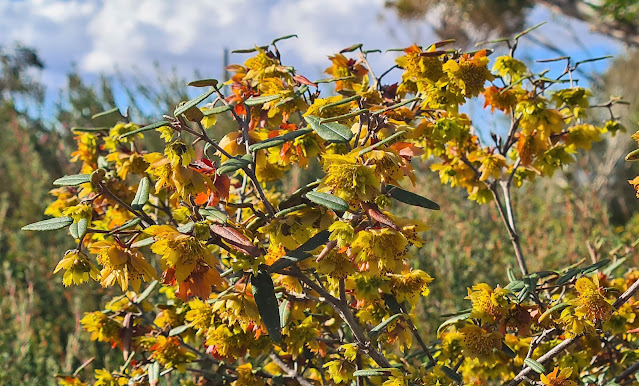More or less magical cloak, but not hanging on the Siegfried Line
As a taxonomist, I'm easily diverted by names. So when I saw the name Siegfriedia on a plant label in the Australian Garden at Cranbourne, I was hooked.
It's an Australian plant - else it wouldn't be growing in this Garden - named in 1934 (after a bit of a stumble in 1931 when the name appeared without a description) by Charles Gardner, an English-born Western Australian.
My friend and colleague, Neville Marchant, describes Gardener as an 'unflagging publicist' who spoke regularly on radio and at public meetings. Sounds like someone I know... Well, except for the fact that his lectures are described by Marchant as 'ideal of the student of taxonomy, but deadly dull for others'. Of course I'd never do that...
Looking up the genus name in my now rather faded copy of Australian Plant Genera by James Baines, I see that attributes the name to Siegfried (Sigurd), the namesake of one of Wagner's operas in the Ring Cycle. Sigurd is a mythical Germanic hero who, as Barnes notes, becomes invisible in a magical cloak.
This is a likely connection to the flowerheads of Siegfriedia, which are mostly hidden under large, sawtooth-edged bracts that look like petals. Baines also reminds us of the Siegfried Line, created by Nazi Germany around this time, but I don't (or don't want to) see the connection with this plant - apart from the obvious use of Siegfried for another obscuring structure. In any case, construction of that defensive border didn't begin until 1936.
Gardner gives nothing away in his description of Siegfriedia in the 1933-dated (but 1934 published) issue of the Journal of the Royal Society of Western Australia. He tells us that a Mrs E. Daw of Ravensthorpe collected this intriguing plant from Starvation Boat Harbour, eight years earlier, but nothing more about the plant name (or indeed Mrs Daw).
Which is odd, because he provides footnotes to the etymology of the other two other new genera described in the paper, Antherostylis and Diploptera. There is also nothing further from Gardner where he first mentions the name Siegfriedia, in his checklist of 1931, Enumerato Plantarum Australiae Occidentalis. So it is for us to provide the meaning, and avoid gratuitous connotations.
There is only one species - from the South Coast of Western Australia (Stirling Range to Esperance) - called Siegfriedia darwinioides. As the species name implies, this species looks a little like another Western Australian genus, Darwinia, which may also have flowers hidden within colourful bracts. Otherwise, the two genera are quite different, Darwinia being a member of the family Myrtaceae and Siegfriedia the Rhamnaceae.
If you are trying to separate Siegfriedia from its closer relatives in the Rhamnaceae, apart from the distinctive floral bracts, the leaves are paired opposite to one another on the stem. You can see them sitting up like little propellers in the picture at the top of this post. Gardener considered it most like the genus Pomaderris, from which it also differs in detail of the floewrs (such as them being barely stalked, without hairs and with extended male parts - the stamens).
For you and I, it's the golden-orange bracts that will attract our attention, and for up to nine months of the year. And the flowers inside are no so invisible.




Comments